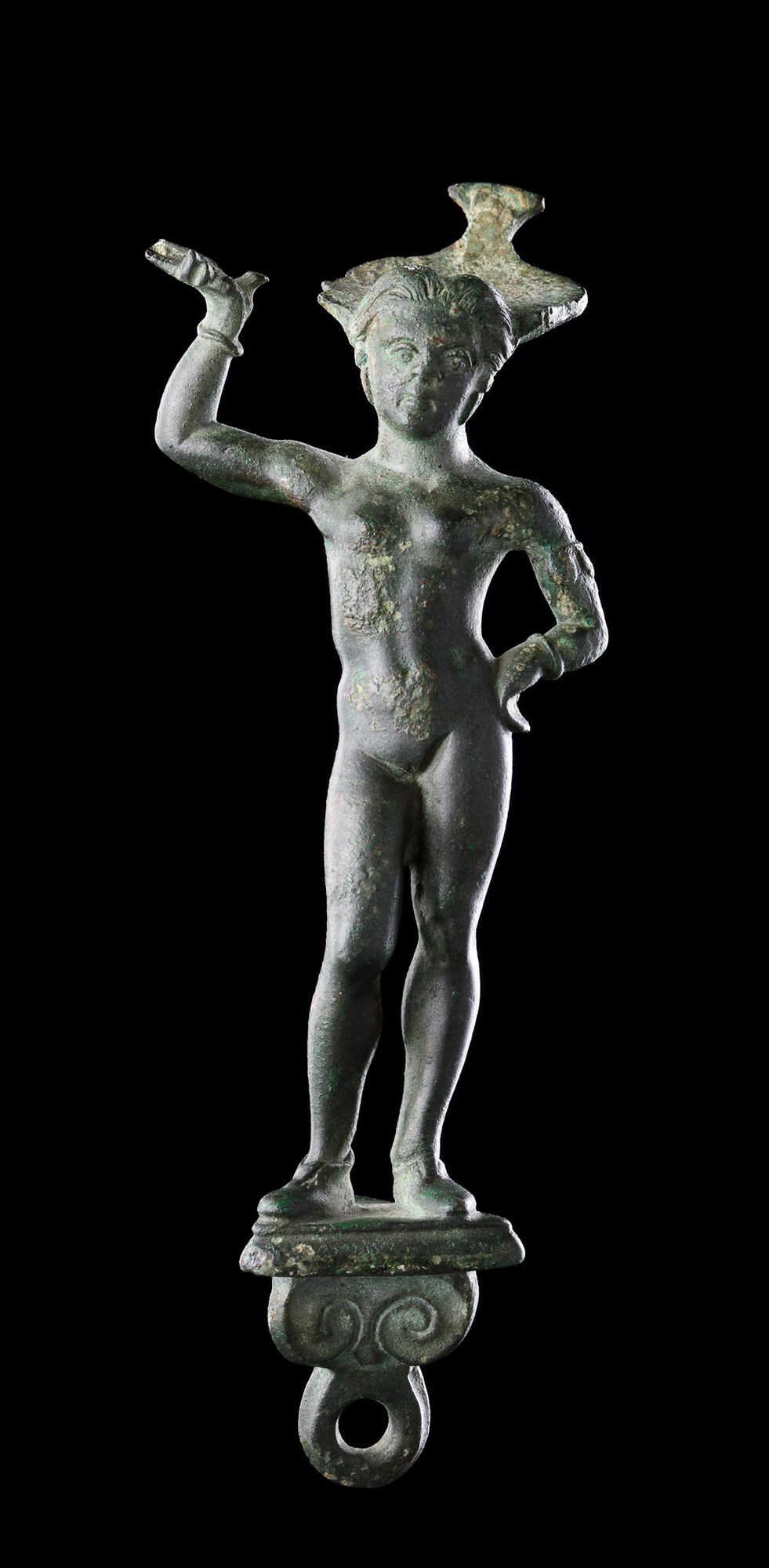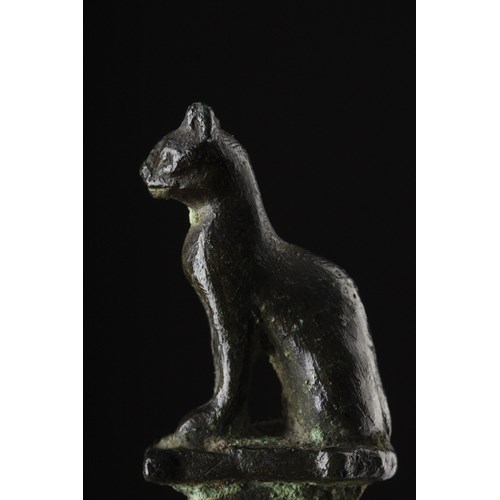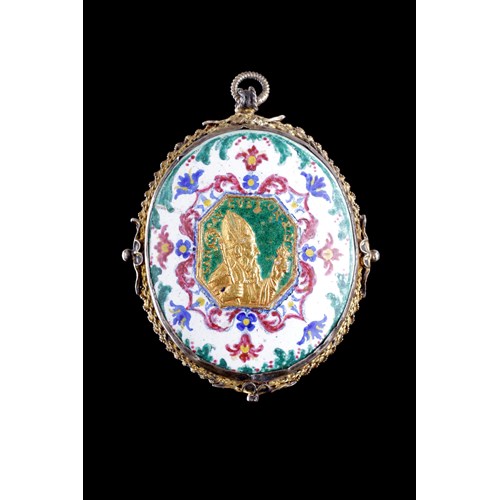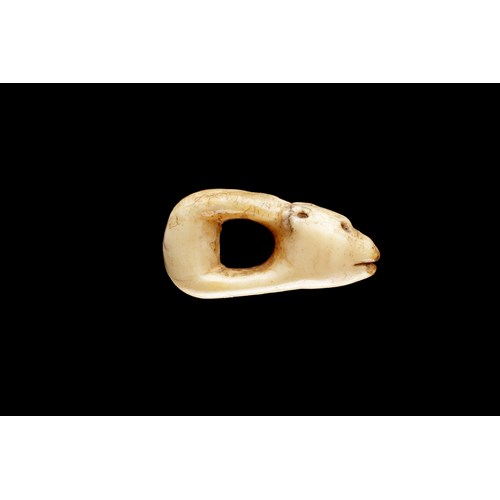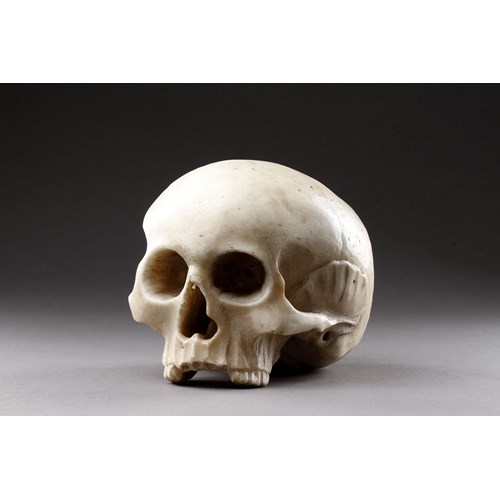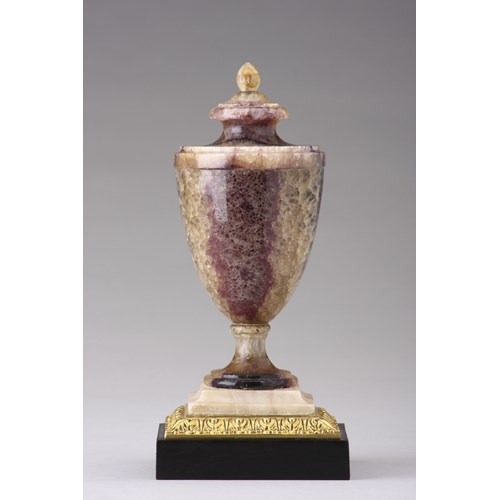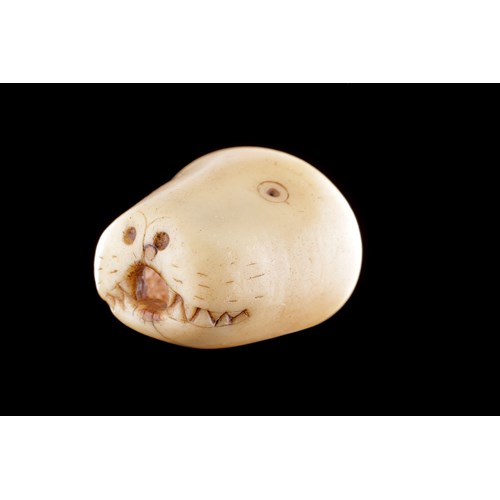A Fine Ancient Etruscan Faliscan Bronze Patera Handle Depicting a Youthful Female Naked Except for Her Soft Slippers
Period 400BC-300BC
Medium Bronze
Dimension 15.5 x 5.5 x 5 cm (6¹/₈ x 2¹/₈ x 2⁰/₁ inches)
Her thick hair parted in the centre sweeps backwards to the shaped projection that would have attached the deep bowl to the handle
Dark green smooth rich patina
4th - 3rd Century BC
Size: 15.5cm high, 5.5cm wide, 5cm deep - 6 ins high, 2¼ ins wide, 2 ins deep
Period: 400BC-300BC
Medium: Bronze
Dimension: 15.5 x 5.5 x 5 cm (6¹/₈ x 2¹/₈ x 2⁰/₁ inches)
Provenance: Ex Private London collection acquired 1980’s
Ex Rupert Wace Limited
Ex Private London collection acquired from above June 2009
Art Loss Register Certificate available
cf: A similar bronze in the Museum of Fine Arts Boston U.S.A. no. 529
Literature: The art of the Etruscan period is an art of many peoples and influences. It can be said that Etruscan art is the real antique art of Italy. Etruria was a rich country well provided with fertile valleys and having quantities of silver and other ores. Roman poets did not exaggerate when they wrote that the Etruscans were well fed and lived enjoyable lives.
The Falisci lived in northern Lazio on the Etruscan side of the Tiber River. They spoke an Italic language called ‘Faliscan’ closely related to Latin. Originally a sovereign state politically and socially they supported the Etruscans joining the Etruscan league. This affiliation led to their near destruction and total subjugation by Rome.
Roman connoisseurs in the days of Pliny were especially fond of collecting Etruscan and Falisci works of art, paying high prices for vases and bronzes. In 295 BC the Romans bought 2000 bronze statues to Rome from the conquered Volsinii and the Emperor Augustus commissioned the renewal of a statue of Apollo. In the bronze foundries of Praeneste, not many miles from Rome, people had worked according to Etruscan models for 500 years. Although considered old fashioned from the epoch of Trajan, Etruscan craftsmen were still employed to make beautiful engraved bronze mirrors, vessels, containers and brooches.
More artworks from the Gallery


